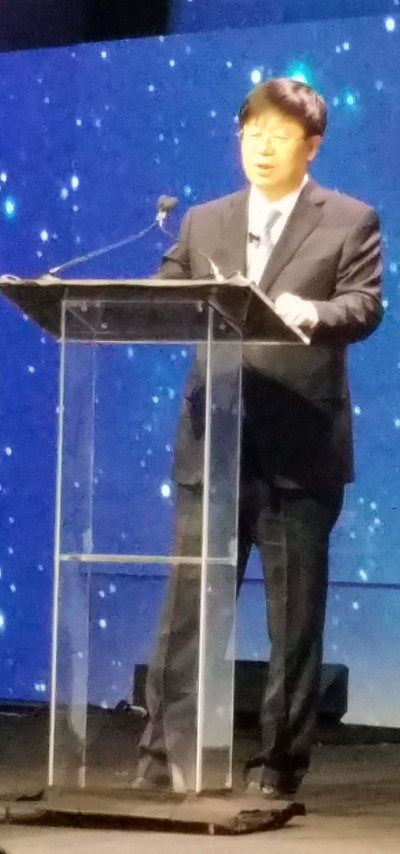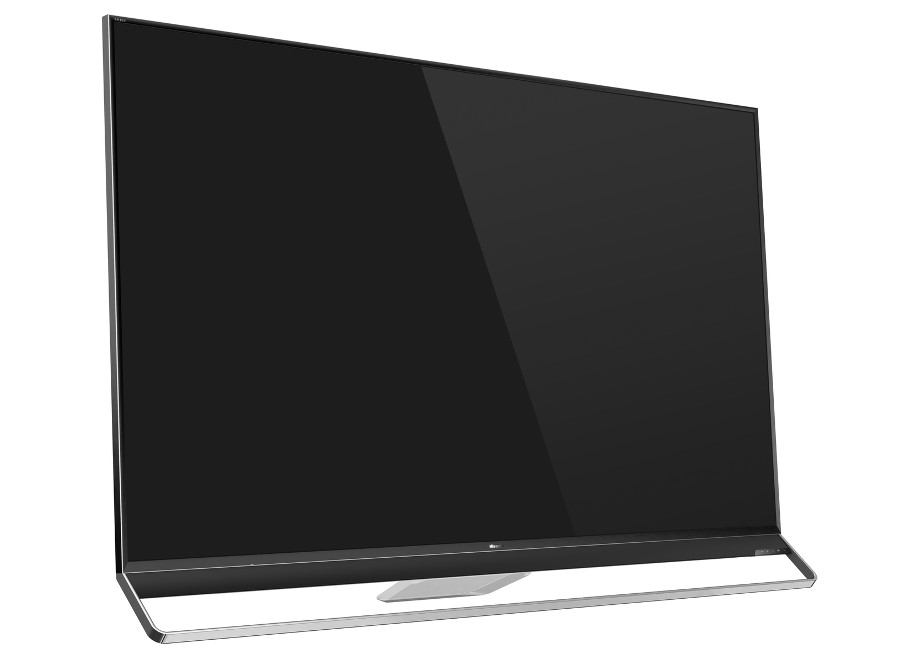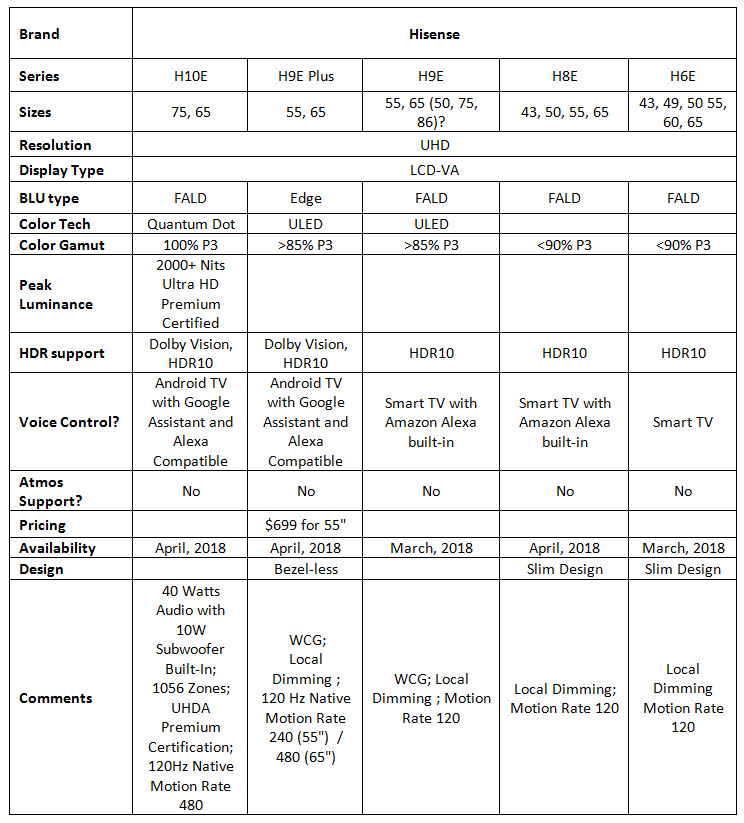Key Messages
The main items Hisense stressed at CES 2018 were their Laser TV and their FIFA sponsorship. In their press conference for example, a Chinese-language address by Hisense president Lui Hong Xin started by noting that Hisense has been working on Laser TV for ten years now and they hold a commanding position in terms of IP for this product category. At CES 2014, they introduced a 100” 1080p Laser TV and last October, they launched a 100” 4K version of this 100” Laser TV. Other screen sizes will be offered in 2018.
 Lui sees the 55” and above category becoming the mainstream screen size and in China which already accounts for 70% of sales. The 75” and above segment is growing too, so they think there is a great opportunity for large sized display solutions – based on projection technology.
Lui sees the 55” and above category becoming the mainstream screen size and in China which already accounts for 70% of sales. The 75” and above segment is growing too, so they think there is a great opportunity for large sized display solutions – based on projection technology.
In China, Lui said that in the 85” and above segment, their Laser TV commands a 60% market share. He thinks this size and the performance of the Laser TV meets the needs of customers on a global scale, which is why they are expanding their efforts in this area. Competitors will follow, which he thinks helps to validate the concept.
In his talk, he likened the invention of the laser as akin to the development of nuclear power, computers and semiconductors – revolutionary in other words. Hisense now intends to build 100 new flagship stores in China to present this revolutionary product to consumers as a stepping stone to a global expansion. In the next three years, Lui thinks the Laser TV category will “be the fastest growing category in the large screen TV industry, and Hisense is well positioned.”
Hisense is clearly a brand to be reckoned with. The company had sales of $17 billion worldwide in 2017 and $1 billion in the U.S. They have multiple R&D facilities and factories globally and invest 5% into R&D every year. And they can achieve great sales results – for example 500K TVs sold in one day in the U.S (Black Friday) and $100 million in sales in one day in China. Hisense TV is ranked number one in the China market by value and volume – its 14th year in a row doing this, well ahead of its competitors. It is doing this not with me-too products, but with innovative and higher quality products Lui said – just like Samsung, Sony and LG.
Hisense is also a major sponsor of sporting events like FIFA and US Soccer. To highlight this aspect, they brought on stage famous soccer players Brandy Chastain and Brian McBride and the producer of a documentary series called Phenoms, a series that chronicles the journey of the next generation of hopeful World Cup stars on their quests to represent their countries.
New Technologies/Upgrades
As part of Hisense’s FIFA sponsorship effort, Hisense has developed a dynamic content hub for everything soccer that will be available in select regions across the world. In the US for example, this application will be the Fox Sports GO: 2018 FIFA World Cup Edition app, which will be available exclusively preloaded on new Hisense Smart TV products. The application will feature multiple Fox Sports digital feeds, including the ability to choose from a variety of live viewing angles during games, such as feeds that focus on specific teams or aerial views. The app will feature live games and near-real-time highlights from 37 customizable camera angles and original soccer content – all in 4K. Hisense Smart TV users will also have access to a variety of pre-produced content including “Road to the World Cup” features and Phenoms.
Hisense is also going to offer platforms with Amazon Alexa built in (Hisense Smart TV platform) and with Google Assistant built in (Android TV platform). The Hisense Smart TV platform allows access to content through universal search feature called 4K Now, and one-touch-button access to the most popular apps. Users can customize the interface or use their voice via the Amazon Alexa integration. This new integration will allow users to control basic TV functions, accessing built-in apps, connecting to music services and even ordering groceries. Alexa will also enable users to connect to other smart home products to control Alexa integrated devices like lights or air conditioners, allowing end users to operate other IoT devices that work with Alexa. In 2018, the company will also be launching a remote control and mobile application, both featuring voice technology.
Android TV users will be able to use Google Voice Assistant allowing access to personal calendars, photos, videos and more, plus control of home IoT devices that are enabled with Google Assistant. It is unclear if the Google integration will allow control of TV functions, however.
LCD TVs
There are three ULED series for 2018 (H10E, H9E and H9E+), which Hisense defines as “wide color gamut” without defining the definition. It also encompasses displays that use quantum dot technology and ones that use other solutions, such as the red KSF phosphor.
Topping the line is the H10E which is a quantum dot series with full array dimmable backlights with 1056 zones. Peak luminance is speced at 2000-2200 cd/m², 100% of P3 coverage and HDR10/Dolby Vision support. It is an Android TV platform with Amazon Alexa built-in as well.

The H9E plus appears to be similar but with a smaller color gamut, i.e. not quantum dot based and goes to a slim bezel-less design with an edge lit form factor and much fewer zones, of course. The company suggested a 55” version might retail for as a low as $699.
The H9E drops the Dolby Vision support and drops to a 60 Hz fresh panel with motion rate 120 performance. It also drops Android TV platform opting for Hisense’s own Smart Tv OS with Alexa built-in. The H8E drops the ULED branding so it is not wide color gamut, while the H6E drops the Alexa integration.


